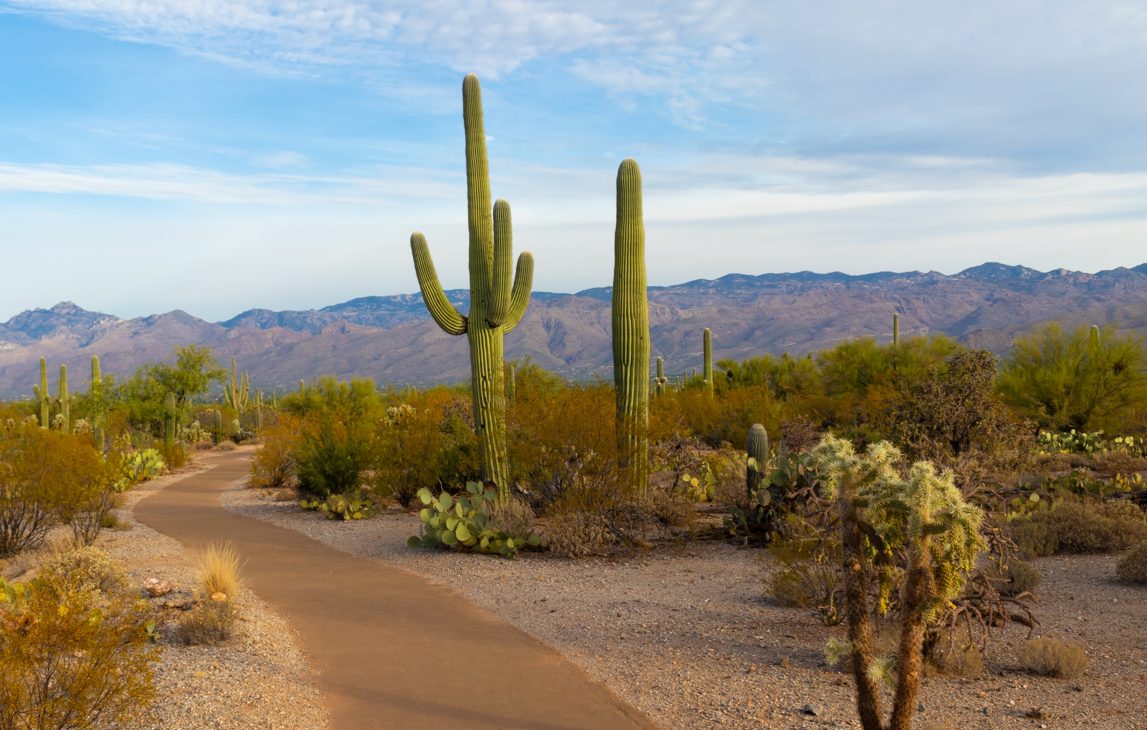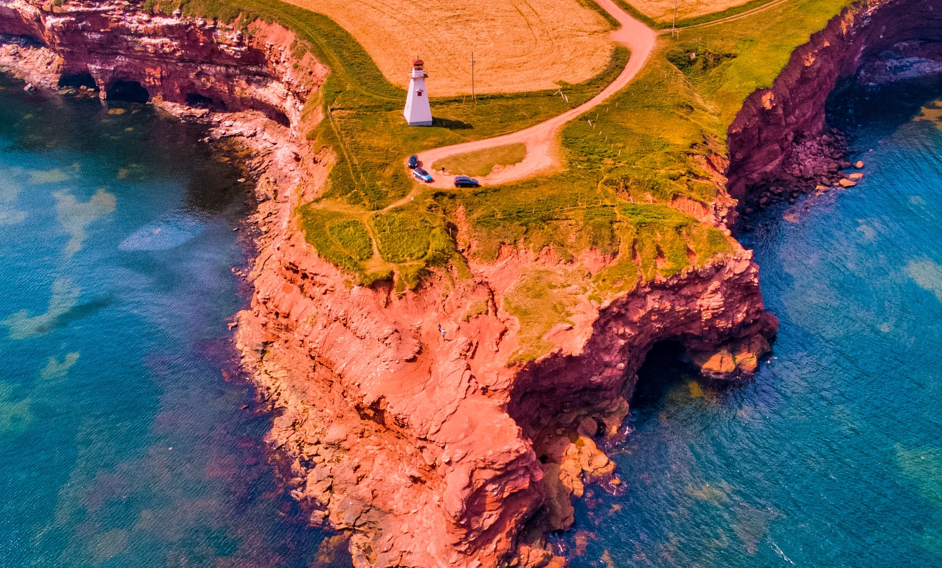Cacti, cowboys, and a very grand canyon create a unique sunshine escape
By Sandrine Champigny
If you’re pining for the sun, Arizona has it in spades, boasting about 300 sunny days a year. Don’t be fooled, though: while the weather is almost always good, Arizona still has four seasons and, depending on where you go, you might find yourself needing a jacket and a bathing suit on the same day.
The best way to discover this one-of-a-kind corner of the United States is to explore it by car, setting your own itinerary. That way you can take the time to savour what this desert state has to offer.
Another World
You can’t visit Arizona without feeling you’ve wandered into the Wild West. With its red-and-orange rocky landscapes, wide-open deserts, and buildings that seem frozen in time, you almost expect John Wayne to ride up.
Hiking
A haven for hikers, Arizona is loaded with trails of all kinds. Even longterm visitors with a passion for walking have plenty of options to keep them busy. In the Sedona area, about a two-hour drive north of Phoenix, the state capital, you can hike through Red Rock State Park and marvel at the scenery; the rocks’ distinctive red colour comes from the effect of weathering on the iron oxide in them. Next, you can make your way to the small city of Flagstaff and nearby Fatmans Loop Trail (hikearizona.com) to take in the local flora and the impressive rock formations.
If walking’s not really your thing, don’t worry—with its incredible landscapes, Arizona seems designed for road trips. From one destination to the next, the panoramas change constantly.
A Very Grand Canyon
Arizona’s biggest attraction is, of course, the famous Grand Canyon. Created by the Colorado River, the canyon is 446 kilometres (277 miles) long and at some points almost two kilometres deep—1,857 metres (6,093 feet). It won’t fail to live up to your expectations.
If you’re in good shape, you might dare to descend into the canyon— by mule or on foot. Either way, be careful: there’s no ramp or guardrail, and it can be a bit icy at certain times of the year. In fact, the North Rim is closed from November to April, so head for the South Rim if you visit during the winter.
Park Lodges
Grand Canyon National Park Lodges manages five distinctive hotels along the canyon’s rim and, for those brave enough to get to the bottom of the canyon, the legendary Phantom Ranch. If you have a few days to spend, it’s well worth the effort. Due to construction, the lodge is open with limited services and limited accommodations—a situation expected to last until at least September 2022—but you can register for a lottery to get a campsite or a spot in one of the cabins (grandcanyonlodges.com). Other sites are also accessible seasonally (grandcanyon.com). For those who don’t plan to visit the canyon bottom, another option is one of the hotels in Tusayan, a resort town near the national park’s southern entrance.
Scenery
You can also explore the terrain surrounding the canyon. The guides from Pink Jeep Tours (pinkadventuretours.com) provide visitors with lots of information about the area. To take in some spectacular scenery, opt for the sunset tour. The multicoloured rocks will make you think you’re seeing rainbows in the canyon. To make the most of all the area has to offer, plan to spend two or three days.
If you’re feeling adventurous, you can also treat yourself to a helicopter ride or take in the canyon from the Skywalk, a U-shaped glass platform that loops out 21 metres (70 feet) over the abyss. It’s more than a kilometre (4,000 feet) down to the bottom, but the attraction’s website insists that the structure is strong enough to support 70 “fully loaded 747 passenger jets.”
Beyond the Desert
In Sedona, you’ll find yourself in another dimension. The city is famous for its mystical vortices, referred to locally as vortexes. According to the Visit Sedona website, the vortexes are “swirling centres of energy that are conducive to healing, meditation, and self-exploration.” You’ll find shops selling spiritual and magic-related goods of all kinds on nearly every corner. It’s easy to believe that there’s a special aura around Sedona when you’re in the midst of its out-of-this-world landscapes.
The Chapel
The Chapel of the Holy Cross (chapeloftheholycross.com) is worth a stop. Inspired and commissioned by Arizona artist Marguerite Brunswig Staude and completed in 1956, the concrete-and-glass chapel sits high atop the red rocks of Sedona and offers a unique vantage point from which to survey the desert environment. It’s a kind of pilgrimage in nature—but amid a sea of tourists: the chapel is open from 9 a.m. to 5 p.m. seven days a week, but no matter the time, but you’ll never be alone.
Microbreweries
Although nature has a lot to offer in Arizona, the cuisine is also wonderful. In Flagstaff, boutiques inspired by the love of Route 66, microbreweries, and the great outdoors epitomize Americana. We highly recommend stopping at the microbrewery Mother Road, where every palate will find its perfect match. Several restaurants, such as Cameron Trading Post (camerontradingpost.com), offer specialties from Arizona’s Native American culture.
Pheonix and Scottsdale
Fans of city life will find a vibrant scene in both Phoenix and Scottsdale. With just under two million inhabitants, Phoenix can’t compare to New York, but it offers an appealing cultural life. In Scottsdale, you can take your pick of various resorts. At the luxurious spa The Phoenician (thephoenician.com) in particular, you can’t help but feel like a Hollywood star.
Spread out over 295,234 square kilometres (113, 990 square miles), Arizona is the sixth-largest US state—vast, yes, but still ideal for touring by car or camper. Its roadside stops and magnificent views, sun, and cacti are stunning. What are you waiting for?
Photo by Christoph von Gellhorn on Unsplash






